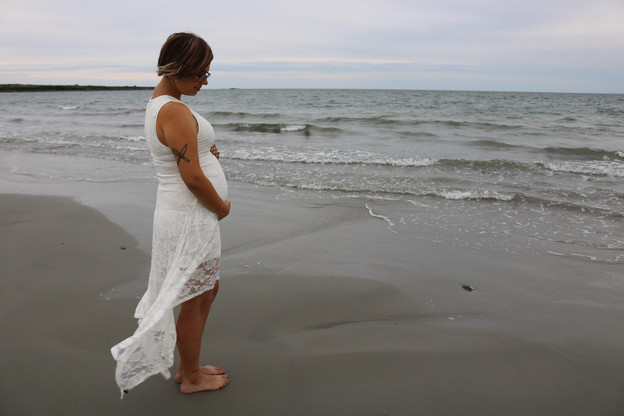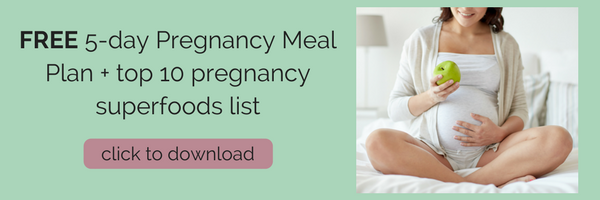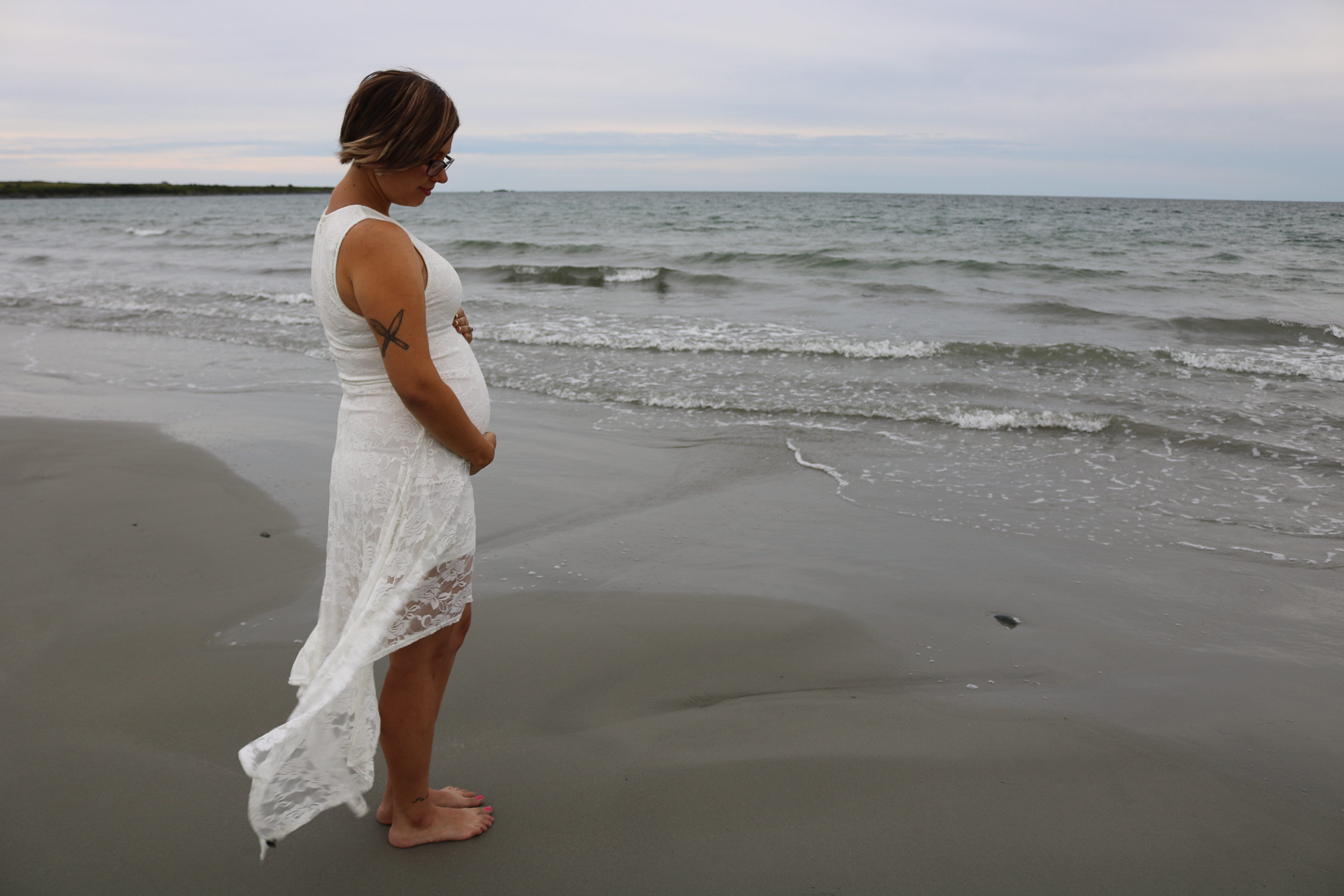
Disclaimer: I am not a doctor! Though my nutrition training me has given me a good background into the science behind and nutritional treatment of polycystic ovarian syndrome, I am not a doctor and any hormonal concerns, PCOS included, should be discussed with your doctor. This information is from my own personal experience and research ONLY and not to be taken as medical advice.
When I was diagnosed with PCOS in late 2015, everything started coming together. My terrible PMS symptoms starting as early as age 11, my incredibly irregular cycles, tendency to put on weight at the drop of a hat, and my mysteriously complicated first pregnancy- despite being a generally healthy, young 23-year old woman at the time. It was like a huge light was finally shone on my previously inexplainable health issues and suddenly, I had the power to not only change my health for the better, but improve upon future pregnancies and births, as well.
To give some background, in my first pregnancy, I struggled with gestational diabetes, PIH (pregnancy-induced hypertension), and a nearly late-preterm birth, in which my luckily healthy, but very teeny tiny girl was born in an almost-premature state right at 37 weeks and 1 day, weighing just over 5 and a half pounds, with a placenta that was almost unrecognizable, due to early degradation. It wasn’t known to us at the time, that my progesterone levels were dangerously low– so low that I was lucky the pregnancy even progressed beyond the first trimester, let alone lasted until the late third trimester, when I went into labor at 37 weeks on the dot, likely due to the fact that my placenta was no longer feeding my sweet baby girl. This resulted in a very sleepy, teeny baby who struggled to nurse in those early weeks, and the stress that ensued trying to encourage her to gain weight whilst struggling with rebalancing my own body, reducing my blood pressure and blood sugar back to normal– not an easy feat in the early exhausted postpartum period (No wonder we waited so long to start trying for #2!).
If only I knew then what I know now.
PCOS, or polycystic ovarian syndrome, is a hormonal condition due to a variety of factors, but most commonly an imbalance of male (androgen) to female (estrogen and progesterone) hormones, in any combination. PCOS can be a misnomer- because not everyone (like myself) has the classic ‘ring of pearls’ cystic ovaries– the reason I wasn’t diagnosed earlier– but there is a much broader diagnostic criteria, including insulin resistance (check), irregular cycles (check), fertility issues and hirsutism (excess hair growth- thankfully not one of my symptoms). It effects 4% to 12% of women of reproductive age, and is the leading cause of infertility among women. This broad and inconclusive diagnostic criteria means PCOS often goes undiagnosed– sometimes for years (like in my case). I won’t go into it too much more, as I am not an expert- but for more information, I will refer you to my doctor, Dr. Brooke Kalanick, who IS the expert on all things PCOS.
Like I said before, this diagnosis changed. EVERYTHING. Often women with PCOS struggle to become and stay pregnant, due to their low female hormone levels. For myself, I became pregnant fairly quickly the first time around– luck of the draw, it seems- but this time around was not so easy, especially with irregular cycles and unpredictable ovulation (thanks to Dr. Brooke for getting me on track with that!). The first time around I experienced a host of symptoms and complications– and this time, armed with knowledge and a year and a half of health changes, this pregnancy has been entirely different than my first.
No gestational diabetes.
No pregnancy-induced hypertension.
No progesterone issues and as far as we can see, a healthy, thriving placenta- and a healthy, thriving baby.
According to the PCOS association, Women with PCOS are at higher risk for pregnancy and delivery complications. These include a three-fold increase in miscarriage risk in early pregnancy compared to women without PCOS, gestational diabetes (diabetes during pregnancy) which can lead to large babies, preeclampsia which is characterized by sudden elevated blood pressure and body swelling after the 20th week of pregnancy, preterm birth, and C-section delivery. (1)
Here is what I did differently this pregnancy, after my PCOS diagnosis:
1. I prepared my body ahead of time.
I spent the year prior to starting to try and conceive getting my body into the best shape possible to conceive and carry a healthy baby. This included making sure my blood sugar was balanced, working out regularly in a way that works well for me (a combination of strength, HIIT + steady state cardio that works well for myself and many women who have PCOS) and working with my doctors to use the right supplements to balance my hormones, align my cycles and achieve regular ovulation.
2. I worked with my doctor and nutritionist to supplement and medicate correctly.
The right supplements are especially important for women with PCOS. I have been able to use my own knowledge to maintain blood sugar balance without medical intervention, but there are proven pharmaceuticals, such as metformin (speak with your doctor!) that have been proven effective for balancing PCOS symptoms. In my case, I needed a hefty dose of progesterone early on in pregnancy to maintain a healthy level and sustain my pregnancy. I was fine with this, because I knew it would help me achieve the balanced, healthy pregnancy I desired. Another consideration is folate– ensuring a (preferably methylated) FOLATE (food based) is used in or aside from your prenatal, and not a synthetic- which many women with PCOS simply can’t process. More reason to work closely with your healthcare practitioners!
3. I maintained good blood sugar balance.
This is something that, like I mentioned, I started prior to concieving- but I kept it up (as much as I could, with early nausea) throughout my pregnancy- and this was no doubt one of the main reasons I avoided gestational diabetes, this time around. Look out for a specific post on this, soon! I made sure to get a hefty amount of protein (also protective against pre-eclampsia), lots of healthy fats and moderate carbohydrates, mostly from vegetables and starchy vegetables- whole food based, always with fiber and paired with protein and fat for balance.
4. I stayed active.
This was a huge difference between my last pregnancy and this one- just my level of activity throughout. Though I stopped running at 7 months, I maintained walking upwards of an hour a couple times a week as well as at-home prenatal strength, yoga and pilates workouts 5-6 days a week to stay active and further maintain my blood sugar balance and manage my blood pressure.
I share all of this to encourage each and every one of you struggling with PCOS or any hormonal condition, for that matter- a healthy, normal pregnancy CAN be achieved, with the right tools. Talk to your doctor, find a new doctor if yours isn’t working with you, work with a nutritionist to get your diet in check and please do not lose hope- health is available for EVERY woman. It all starts with taking action. Do you have questions? I’m always happy to share with you. Please feel free to email me– kris@healthymamakris.com.


Leave a Reply Cancel reply
5-day series: how to get started with meal prep for easier meals
free email series
©️ 2025 Kristin Dovbniak for Healthy Mama Kris | Template by Maya Palmer Designs | Privacy Policy | Terms
